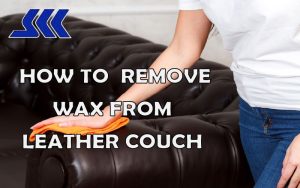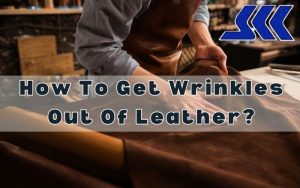Leather is a popular material used in many products such as jackets, bags, shoes, and wallets, but it requires proper care to maintain its appearance and longevity. One common mistake when in the process of cleaning is using soap, which can cause the surface to become sticky.
In this article, we’ll explore the reasons why soap causes stickiness, how to fix it, and best practices for cleaning and maintaining your items. Let’s get started!
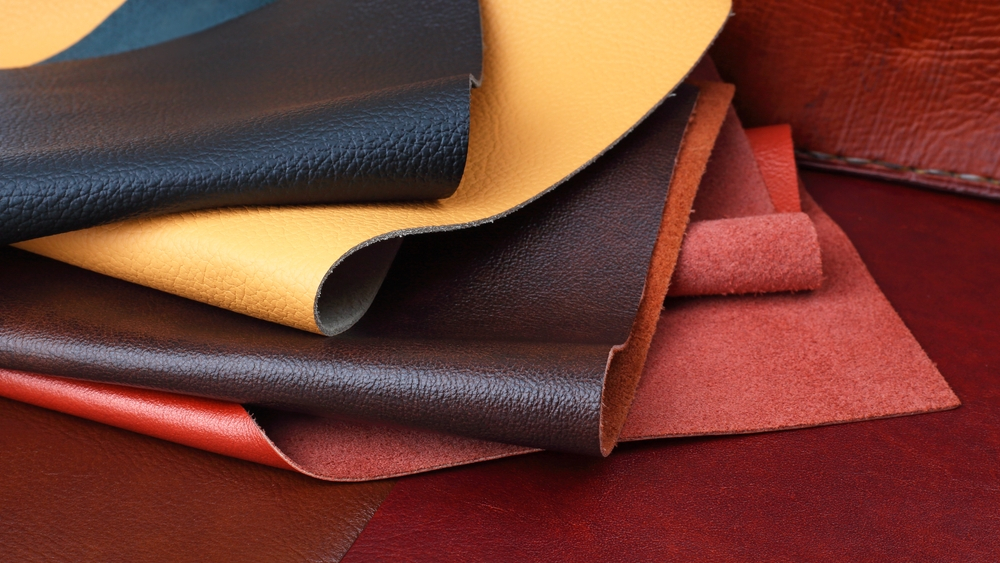
I Washed Leather with Soap and Now It’s Sticky: What Happened?
If you’ve made the mistake of washing leather with soap, you may have noticed that it becomes sticky afterward. So, what happens when soap comes in contact with this material?
Normally, soap, especially when not adequately rinsed off, can leave a residue that makes the leather feel sticky. Moreover, soap’s surfactants, designed to lift and remove oils and dirt, can strip away the natural oils. This can lead to dryness, brittleness, and an increased susceptibility to cracking leather.
Additionally, the pH balance can also be disrupted by the alkalinity of many soaps. This alteration can weaken it and speed up its degradation over time.
The combined long-term effects of oil stripping, pH alteration, and residue buildup can cause substantial damage to the leather, including a loss of suppleness and strength, which can result in cracks and tears. The color and finish of the leather may also be negatively affected, leading to a dull and worn-out appearance.
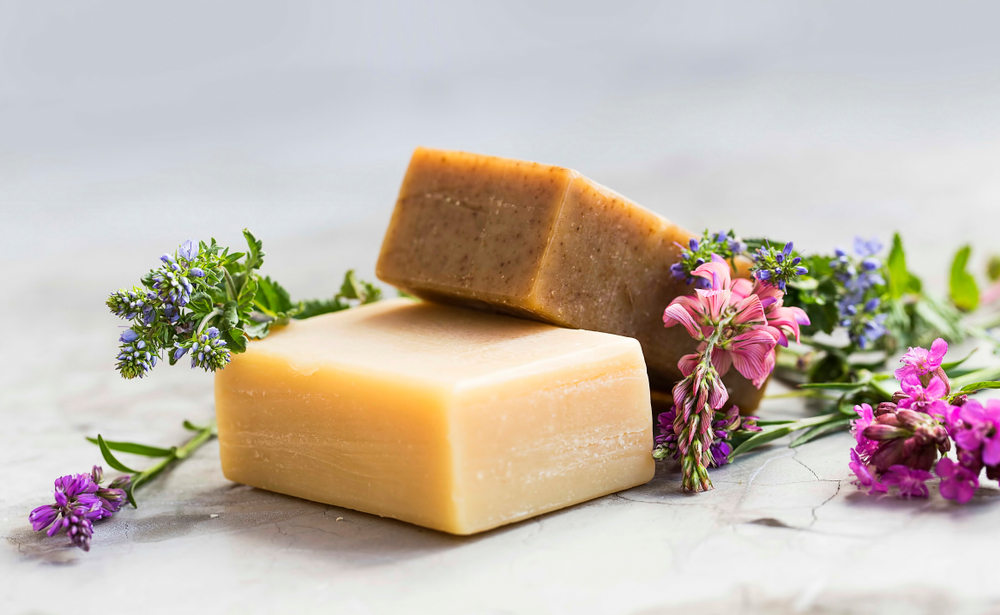
How to Fix Sticky Leather After Washing with Soap: 3 Methods
To clean sticky leather, we can provide you with the following detailed guide in each method to help you remove the stickiness:
Method 1: Use Leather Cleaner
Firstly, choosing the right leather cleaner, normally, not all of them are created equal. Some are designed for specific types of leather. Be sure to read the label carefully and choose a cleaner that’s appropriate for your item. If in doubt, ask for advice at the store or contact the manufacturer of your item.
Next, before you start cleaning, make sure the item and your work area are clean and dust-free. If the item is particularly dirty, should wipe it down with a dry cloth first.
Now, we come up with applying the cleaner, remember to shake the bottle of leather cleaner well before use. Apply a small amount of cleaner to one of your clean, soft clothes. Avoid pouring the cleaner directly onto the leather as this can cause staining or spotting. Additionally, it’s important to test the cleaner on an inconspicuous part of the item to ensure it doesn’t cause discoloration or damage.
Afterward, gently rub the cloth with the cleaner onto the sticky area. Use gentle, circular motions, and don’t press too hard. The aim is to lift the stickiness off the surface, not to rub it in further.
After you’ve treated the sticky area, use the second clean, dry cloth to gently wipe off any excess cleaner from the leather’s surface. Be sure to remove all the cleaner, as leaving it on can lead to residue and potential damage.
Lastly, allow the leather to air dry naturally in a well-ventilated area. Avoid placing it in direct sunlight or near a heat source like a radiator or heater. Because this can cause the leather to dry out and crack.
To maintain the longevity of your item, after the leather has dried, apply a high-quality leather conditioner. This could restore any natural oils that might have been stripped away during the cleaning process.
Important cautions:
In this method, remember always read the label and follow the manufacturer’s guidelines. Also, apply the cleaner to the cloth, not directly to the material, and use it sparingly.
Method 2: Gently Wipe Off Soap Residue
To begin, should take one of your soft, clean clothes, and dampen it with distilled water. Normally, distilled water is recommended over tap water. Because it doesn’t contain any minerals that could potentially stain or damage. Additionally, ensure the cloth is just slightly damp, not soaking wet.
Next, before applying the damp cloth to the sticky area. Should test it on a small, hidden part of your item. This could help you check to see if water stains or discolors the leather.
Continue gently wiping the sticky area to remove any soap residue. The key here is to be gentle – do not scrub or rub the area forcefully. Because it can further push the soap residue into the leather or cause additional damage. Work in small sections, ensuring you cover the entire sticky area.
Afterward, use the second clean, dry cloth to pat the area dry. Again, be gentle and avoid rubbing. Let the material air dry naturally in a well-ventilated area.
Important Cautions:
Never attempt to speed up the drying process by using heat or placing the leather in direct sunlight. These can cause it to dry out too quickly, leading to cracking or warping. Moreover, not scrubbing or rubbing, can lead to scratches, discoloration
Method 3: Isopropyl Alcohol (70%)
The first step is to mix one part of isopropyl alcohol with five parts of distilled water. This dilution is important because pure isopropyl alcohol can be too harsh on leather.
Next, before applying the solution to the sticky area. Should test it on a small, hidden part of the item to ensure it doesn’t cause discoloration or damage. After that, dampen one of the clean cloths with the diluted alcohol solution. You should wring out the cloth to remove excess liquid to avoid soaking wet.
We move on to the cleaning process and should dab gently the sticky area with the dampened cloth. Avoid scrubbing or rubbing as these actions can harm the leather’s surface. Work in small sections to ensure even cleaning.
After you’ve treated the sticky area, use the second clean, dry cloth to pat the area dry. Avoid using heat or direct sunlight to speed up the drying process as these can cause the leather to crack or warp.
Important Cautions:
Remember, this method should be used as a last resort after others. If the stickiness persists or the leather appears damaged, consult a professional leather cleaner.
Additionally, in this method, always test the solution on a small, hidden part of the item before applying it to a more visible area.
Preventing Sticky Leather in the Future
To prevent sticky leather in the future, it’s important to use proper cleaning techniques and products.
Proper Cleaning Techniques
- Remember always to use a soft, lint-free cloth when cleaning leather to protect the surface of it.
- Avoid using too much water as this can damage it.
- Additionally, you should test any cleaning products on a small, inconspicuous area before using them on the entire item.
- Never use soap, detergents, or harsh chemicals.
Choosing the Right Products
- Look for leather cleaners specifically designed for your types of it such as suede, or nubuck.
- Avoid using products containing alcohol or acetone, as these can cause damage and discoloration.
- Choose cleaning products with a neutral pH to avoid damaging the material’s natural oils.
Leather Care Best Practices
Proper leather care involves more than just cleaning. Here are some tips for you to maintain your items:
- Wipe down your leather items with a dry, soft cloth regularly to remove dust and dirt.
- Condition it every 3-6 months to keep it soft and supple.
- Address spills and stains immediately to prevent permanent damage.
- Store your items away from direct sunlight, as this can cause fading and drying.
- Keep your items in a cool, dry place with good air circulation to prevent mold and mildew.
- Use padded hangers to maintain their shape.
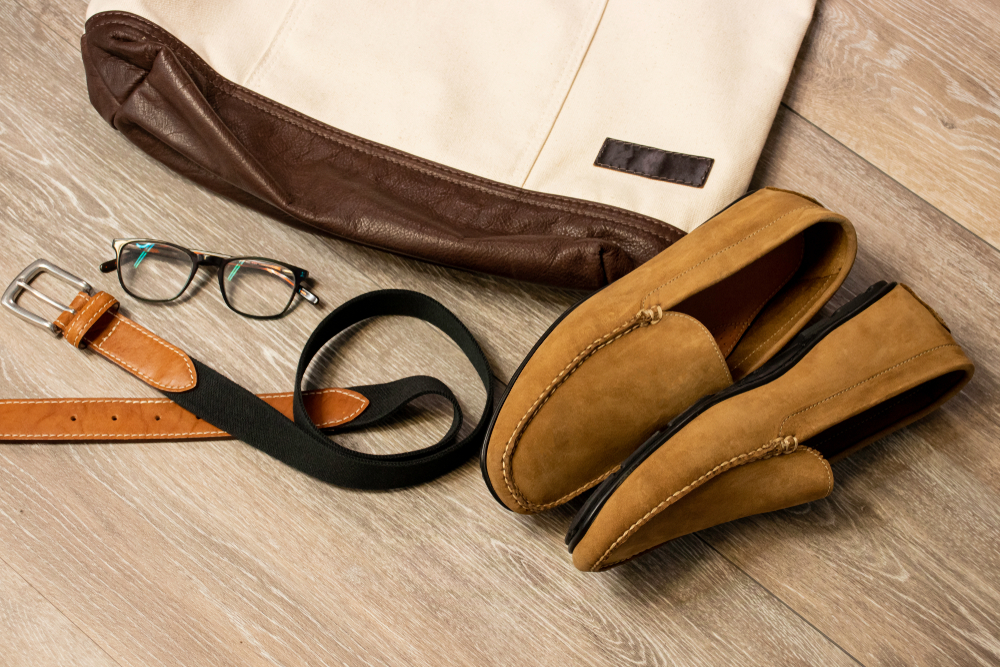
Conclusion
Leather is a durable and fashionable material, but it requires proper care to maintain its appearance and longevity. By avoiding soap and using appropriate cleaning products and techniques, you can prevent stickiness and keep your items looking their best. With regular maintenance and proper storage, your items will last for years to come.
FAQs
- Can I use baby wipes to clean the leather?
Although baby wipes may seem like a gentle option for cleaning leather, they often contain chemicals that can damage the material. We highly recommend using products specifically designed.
- Can I use saddle soap on my leather items?
Saddle soap is specifically designed for cleaning and conditioning leather saddles and tack, but it may be too harsh for other types of material items. It's best to use a leather cleaner and conditioner specifically formulated for your type of this fabric.
- How to Clean a Sticky Leather Wallet?
If you've accidentally washed your leather wallet with soap. You need to gently wipe the wallet with a soft cloth dampened with a mixture of equal parts white vinegar and water. After that, allow the wallet to dry completely. Finally, apply a leather conditioner to restore the wallet's natural oils and suppleness.

